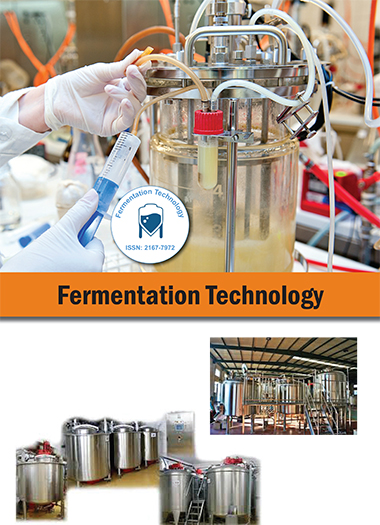ఇండెక్స్ చేయబడింది
- J గేట్ తెరవండి
- జెనామిక్స్ జర్నల్సీక్
- వ్యవసాయంలో గ్లోబల్ ఆన్లైన్ పరిశోధనకు యాక్సెస్ (AGORA)
- RefSeek
- హమ్దార్డ్ విశ్వవిద్యాలయం
- EBSCO AZ
- OCLC- వరల్డ్ క్యాట్
- పబ్లోన్స్
ఉపయోగకరమైన లింకులు
ఈ పేజీని భాగస్వామ్యం చేయండి
జర్నల్ ఫ్లైయర్

యాక్సెస్ జర్నల్స్ తెరవండి
- ఆహారం & పోషకాహారం
- ఇంజనీరింగ్
- ఇమ్యునాలజీ & మైక్రోబయాలజీ
- క్లినికల్ సైన్సెస్
- జనరల్ సైన్స్
- జెనెటిక్స్ & మాలిక్యులర్ బయాలజీ
- నర్సింగ్ & హెల్త్ కేర్
- న్యూరోసైన్స్ & సైకాలజీ
- పర్యావరణ శాస్త్రాలు
- ఫార్మాస్యూటికల్ సైన్సెస్
- బయోఇన్ఫర్మేటిక్స్ & సిస్టమ్స్ బయాలజీ
- బయోకెమిస్ట్రీ
- మెటీరియల్స్ సైన్స్
- మెడికల్ సైన్సెస్
- రసాయన శాస్త్రం
- వెటర్నరీ సైన్సెస్
- వ్యవసాయం మరియు ఆక్వాకల్చర్
- వ్యాపార నిర్వహణ
నైరూప్య
Improvement of Saccharification and Fermentation by Removal of Endogenous Chemicals from Pretreated Lignocellulosic Biomass (1). Effect of Ion-Exchange Resin Treatment
Hoshino T, Tsuji M, Yajima Y, Yoshimune K and Matsushika A
The effects of removal of enzyme inhibitors on saccharification of lignocellulosic biomass and fermentation of their hydrolysate were examined with the aim of improving bioethanol production. Hydrothermal-mechanochemical treated woody powders lost their cell structures and lignin was widely and randomly distributed in treated woody powders. Enzymatic reaction resulted in the formation of many cracks and pores on the woody powder surface, and these cavities extended to the interior of woody powders. The concentrations of 3 kinds of phenolic enzyme inhibitors (gallic, tannic and trimesic acids) in the supernatant of the reaction mixture gradually increased during the enzymatic hydrolysis. Cracks and pores of hydrolyzed woody powders were probably routes of inhibitor release to the reaction mixture. Enzymatic saccharification was improved 1.4-fold by ion-exchange resin treatment after 24 hours of hydrolysis, and inhibition of cellulase activity was decreased by 60-95% compared to the control. Ethanol yield was improved 2.2-fold and lactic acid by 1.3-fold compared to corresponding yields using normal hydrolysates.